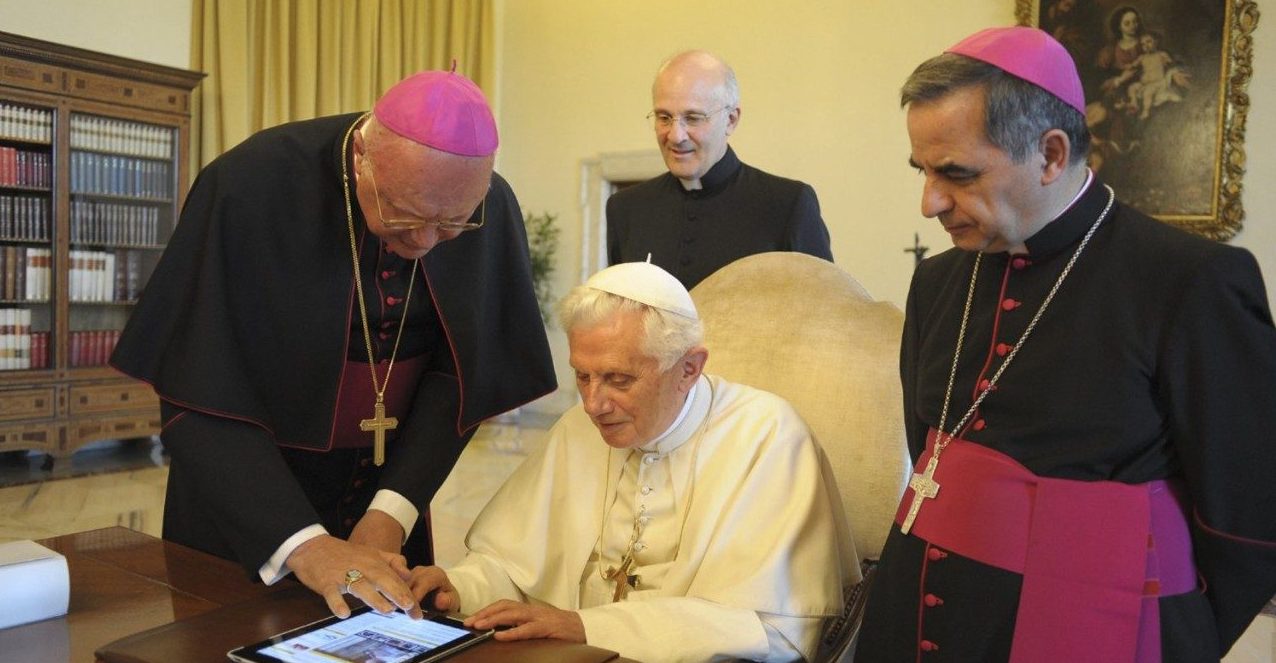Alessandro Gisotti
(ZENIT News – Vatican News / Rome, 01.03.2023).- His reputation as a great theologian is unanimously acknowledged, but the late Joseph Ratzinger was also a remarkable communicator, with his own notable status, whose legacy will undoubtedly surpass the temporal limit of his earthly existence.
The fact that Benedict XVI was not a communicator for the masses—however much he attracted the attention of millions of young people during the World Youth Days—in no way detracts from the value of his style of communication.
First of all, as a theologian, he demonstrated that even highly intellectual topics can be explained to the lay person and be within the reach of a wide audience, not only specialists. The success of his Introduction to Christianity, which is to this day—more than 50 years after publication—a worldwide best seller in religious publishing, shows Ratzinger’s innate ability to offer reasons for faith in Jesus Christ and to do so with clear arguments and fascinating and convincing language.
The same can be said for the trilogy on Jesus of Nazareth, a work into which Joseph Ratzinger poured his whole self, managing to complete it before his resignation, despite the travails of governing the universal Church.
It can therefore be said that Benedict XVI was a great witness to the faith—and to its reasonableness, as it emerged most recently in his spiritual testament—in part because of the way he was able to communicate it.
He did so in particular through his writings, speeches (some memorable, as recalled by many in recent days), and homilies, described as «sublime» by Fr. Federico Lombardi, SJ, for the wise harmony between theology, knowledge of Scripture, and spirituality.
Courage to take risks in communication
However, the German-born Pope never failed to courageously «take risks» in the vast field of communication.
Benedict XVI was the first Pontiff to meet with victims of sexual abuse by members of the clergy, an act of great significance and communicative power in which Ratzinger put listening at the center.
His manner of listening—witnessed in meetings during international travels—shied from the spotlight and was marked by availability and empathy, both essential conditions to undertake the process of conversion of the heart which Pope Francis has pursued with conviction and which formed the basis of the February 2019 Summit on the Protection of Minors.
Although criticism has been lacking from certain media outlets regarding some of his decisions, Benedict XVI always maintained a positive attitude toward the world of information and communication.
His conversation with German journalist Peter Seewald gave birth to Light of the World, a book that touches on all the most sensitive issues of his pontificate, even on the subject of his resignation.
Benedict XVI was also the first Pope to have sent text messages (to the young people at the WYD in Sydney), to dialogue with astronauts on the International Space Station, to answer questions on TV on Good Friday (in 2011), and to write an editorial in the Financial Times at Christmas the next year focusing on the engagement of Christians in today’s world.
Evangelizing the ‘digital continent’
Above all, Benedict XVI was the first Pope to confront the bursting onto the scene of social media, which profoundly reshaped the global communicative context precisely in the years of his pontificate.
No less than five of his eight messages for the World Communications Days are dedicated to this unprecedented digital areopagus. Together they constitute a kind of compendium of the Church’s Magisterium on this new reality which has changed not only the way we communicate but also the way we relate to others.
Benedict XVI immediately grasped the meaning of the social-media revolution, which is not so much a means to be used as an environment to be inhabited. He therefore coined the term «digital continent» for social media, saying that, like geographical ones, the digital continent requires the commitment of the faithful—particularly the laity, in line with Inter Mirifica—to evangelize this new mission territory.
The late Pope Emeritus also understood that the false distinction between virtual and real must be overcome, since what is shared, and interacted with, on the new platforms has concrete consequences on people’s daily lives.
Digital evangelizers
Benedict XVI encouraged Christians to be digital witnesses rather than influencers, to transform social media into «doors of truth and faith.»
And he did so not only with words. On 12 December 2012, he became the first Pope to send a tweet through the @Pontifex account opened a few days earlier. His decision has at times been compared to Pius XI’s establishment of Vatican Radio. Not everyone approved of his action, fearing an exposure of the Pope to criticism and offense, but Benedict XVI was convinced of his choice to follow in the direction of the new evangelization.
Once again, a Pope knew how to seize the potential of technological innovations in order to reach people who would otherwise remain excluded from the proclamation of the Gospel.
A few weeks after the account was opened, Benedict XVI renounced his Petrine ministry. The @Pontifex Twitter account was then «reactivated» by his successor, Pope Francis, who today—through his tweets in 9 languages—reaches more than 50 million followers daily.
So, in the nearly 8 years of his pontificate, Benedict XVI communicated using the most diverse means of communication with creativity and courage.
Later, in his almost 10 years as Pope Emeritus, his communication took a different form, invisible but no less effective: silence and prayer.
Alessandro Gisotti is Deputy Editorial Director Vatican Media



